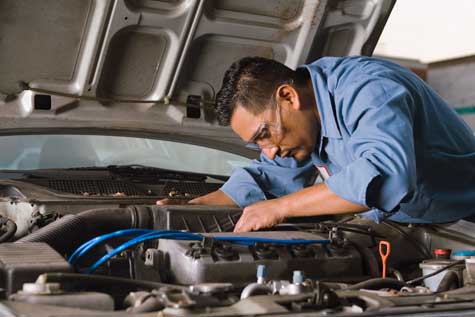Vehicle inspection is a procedure mandated by national or subnational governments in many countries, in which a vehicle is inspected to ensure that it conforms to regulations governing safety, emissions, or both. Inspection can be required at various times, e.g., periodically or on the transfer of title to a vehicle. If required periodically, it is often termed periodic motor vehicle inspection; typical intervals are every two years and every year. When a vehicle passes inspection, often a sticker (inspection decal or inspection sticker) is placed on the vehicle’s windshield or registration plate to simplify later controls, but in some countries—such as the Netherlands since 1994—it’s no longer necessary. Inspection stations are places to drive inside to see if a vehicle passes inspection once a vehicle is due for inspection. Most US inspection decals/stickers display the month’s number and the year.
In some jurisdictions, proof of inspection is required before a vehicle license or license plate can be issued or renewed. In others, once a vehicle passes inspection, an inspection decal is attached to the windshield or registration plate, and police can enforce the inspection law by seeing whether the vehicle displays an up-to-date decal.
